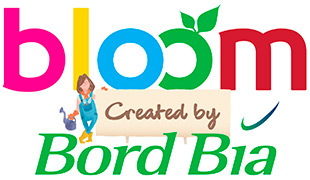PLAN EDEN FAQ
by Peter O’Brien
I have a small dark courtyard, how would I make best use of it?
Clean horizontal lines, like those of lathed panels or raised planting beds, would draw the eye around and give more of a sense of space to the garden. Architectural planting and a limited palette of carefully chosen shade-tolerant plants coupled with striking form, foliage and colour, would ensure the best use of space and give year round interest. One possible idea would be the use of strategically placed mirrors to reflect light and give the illusion of a larger space beyond the boundaries.
I have an average size suburban garden, how could I best use the space?
Contrary to what would seem the obvious answer, filling the site constructively but using clean and unfussy lines, will actually give more of a sense of space and proportion to the garden. Consider the furnished room compared to an empty room!
If possible, creating even minor level changes will provide much more visual interest and a sense of depth to the design.
My garden is on a slope, what is the best way to deal with this?
On a positive note, level changes can add interest to a garden and perhaps bring in views of the wider landscape.
Depending on budget considerations, these level changes can be dealt with by a combination of terracing, steps and easily managed slopes.
Strategically placed planting can soften the appearance of an incline and perhaps frame views both within the garden and beyond.
I have a very large site, I don’t really know where to start.
Design the whole site early, so that it can be implemented in practical stages as the budget allows.
A large space can be divided into several smaller areas to make the site less daunting and more comfortable, and filtering views from one area to the other makes it much more inviting, and contrary to what you would expect, creates more of a sense of proportion.
My garden is very bare and uninviting, how can I make it more appealing?
The key is to identify what the garden will be used for, as it will be designed very differently depending on whether you want to eat and entertain in the garden, create a children’s playground, or if you just want something attractive to look at from the house.
Generally speaking, hard landscaping will give structure, while good quality planting will furnish the area. Water features are great to create sound, reflection and movement. Painted walls can unify a design and coupled with flowering plants, will bring colour to the garden. Taller plants such as bamboo and trees give it an element of height and intimacy or can be used to frame a view.
I don’t really know anything about gardening, I just want a relaxing outdoor area where I can entertain. How should I proceed?
In this case the emphasis should be on the hard landscaping elements in the garden, including paving or decking, lighting, shelter and enclosure and garden furniture, with low maintenance architectural planting as a final but important element of the design.
How much will I be involved in the design process?
You can be involved as little or as much as you want. We would generally have an initial meeting with you to evaluate your needs and wishes for the garden. Some clients have very specific ideas of how they want to proceed, while others are comfortable to leave the whole project in the hands of a designer and this is taken into account at an early stage.
How much would it cost to build the garden after the initial design stage?
This really depends on what you want to include in the design. Some gardens can be done very economically, however it usually pays off to invest a little more during the initial stages. Getting good quality materials can save you money in the long run, while using semi mature-plants gives the garden an immediate ‘finished’ look, rather than having to wait several years to enjoy it.
So many plants are available, how do I know which ones to choose?
Unless you have a passion for plant collecting, after consideration of environmental factors, such as light and water availability, soil type, etc. it is best to try and limit the choice of plants to a few high impact combinations.
Plant repetition around the garden tends to give continuity and a more settled feel to the planting.
If there are views to the wider landscape, or even trees or shrubs visible in an adjacent garden, it is good to reflect their form and texture within the planting, as this gives more of a sense of space by blurring and stretching the boundaries.
PLAN EDEN, UNIT 44 NEWTOWN BUSINESS & ENTERPRISE CENTRE, NEWTOWNMOUNTKENNEDY, CO WICKLOW/
43 ARDAGH PARK, BLACKROCK, CO. DUBLIN
TEL: 01 201 5464 / 086 221 5468, INFO@PLANEDEN.IE © PETER O’BRIEN / PLAN EDEN





